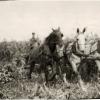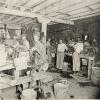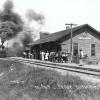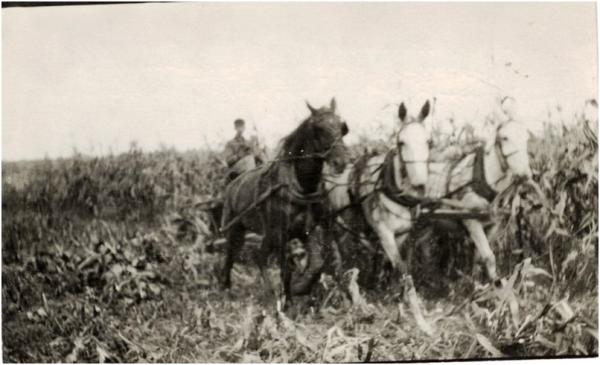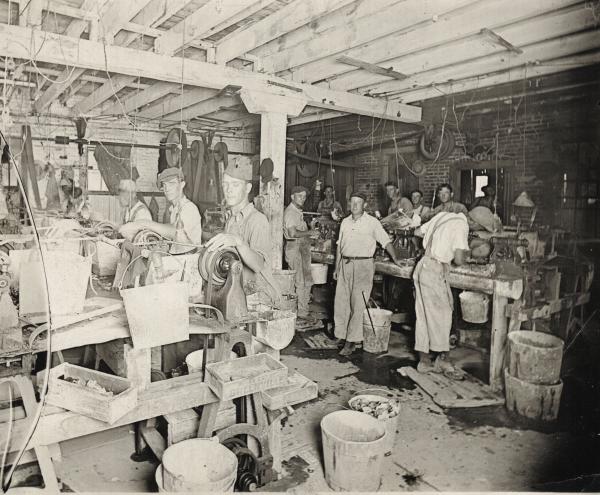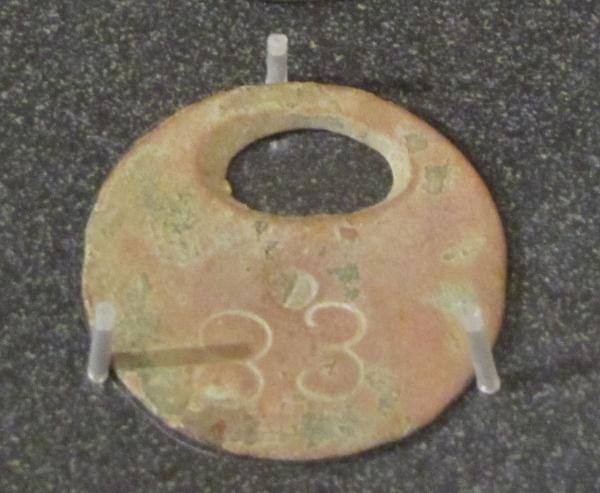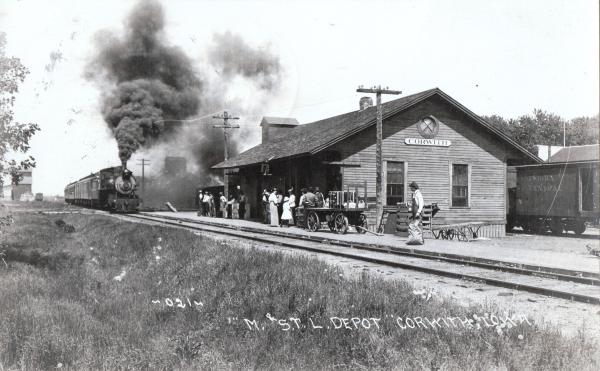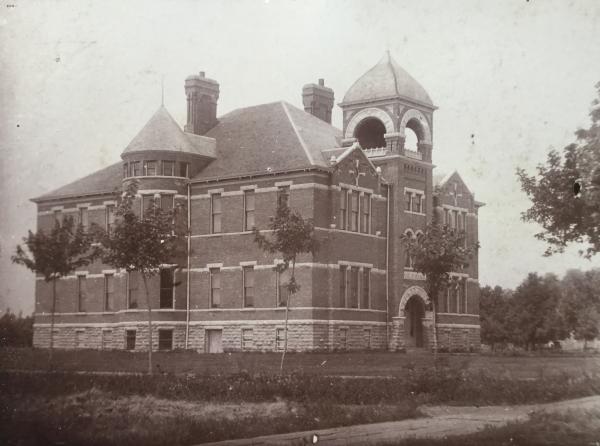Iowan Occupations Then and Now: A Timeline Comparison
| Grade | 1st Grade | Class | Social Studies | Length of Lesson | 45 Minutes |
| Lesson Title | Iowan Occupations Then and Now: A Timeline Comparison |
| Unit Title | Iowans at Work |
| Unit Compelling Question | How do Iowans work to provide for themselves, their families, and their communities? |
| Historical Context: The manner in which people make a living, and the variety and scope of job opportunities, has changed throughout time based on factors such as socio-economic status, societal and consumer needs, and technological advances. The jobs available to individuals have also changed, as gender roles assigned by society have shifted over time. Some jobs, such as mining and farming, require difficult manual labor. Some jobs, such as nursing, teaching, or hair styling, require individuals to remain on their feet all day. Jobs that existed one hundred years ago, such as a local telephone switchboard operator, no longer exist today due to technological advances. Factory jobs, in which raw materials are turned into a product, exist in far fewer numbers in the United States today, as many of those jobs have been moved to other countries. ~ Allyson Simpson, Simpson College 2018.017.011 This photograph shows a Chickasaw County farmer cutting corn. The farmer appears to be using a corn cutter, which was a horse-drawn sled with blades attached to it that cut one or two rows of corn at a time. 2018.010.002 This photograph, taken around 1900, shows several workers inside of a pearl button factory in Muscatine, Iowa. John Frederick Boepple, a German immigrant button maker, launched the pearl button industry in Muscatine in 1891, when he opened a small button shop. The button and clamming industries started small but quickly overwhelmed the town. Clamming became the Mississippi River's gold rush while large automated factories and shell-cutting shops employed nearly half the local workforce. By 1905, Muscatine made 37 percent of the world's buttons and earned the title of "Pearl Button Capital of the World." Entire families - men, women, and children - contributed to the industry, giving weight to the popular local saying "No Muscatine resident can enter Heaven without evidence of previous servitude in the button industry." Although the industry peaked in 1916, several decades passed before the American-made pearl button buckled under the pressure of foreign competition, changing fashions, limited availability of shell, and the development and refinement of plastic buttons. The rise and fall of the pearl button occurred over nearly 75 years before being replaced by plastic buttons. During this time, Boepple began his own pearl button business. After finding the mussels of Illinois too fragile and thin to cut, he returned to Muscatine where the mussels were thick and durable to cutting. Creating an ocean pearl machine to cut fresh water mussel shells, Boepple established his first shop. However, the McKinley tariff of 1890 made ocean shell imports rather expensive and Boepple had to find a business partner to help with the business. Working with William Molis, the two opened the worlds first fresh water pearl button plant in the world. As the factory grew, the plant moved from the foot-powered to steam-powered machines and created a Barry Automatic machine to drill holes to make a standardized button. Muscatine soon became known as the Pearl Button Capital of the World. 2018.012.014 Miner's checks, also known as lamp checks, tokens, or tags, were used by mining companies to keep track of how many workers were in a mine in case an accident occurred. This miner's check was used in Buxton, Iowa. Buxton was a mining town founded in 1895 by the Consolidation Coal Company (CCC), which supplied the Chicago and Northwestern Railway. The company established Buxton after a four-year search for new coal veins. After its search, the company purchased 8600 acres of land in Monroe County and 1600 acres in neighboring Mahaska County in 1900 for $275,000. The mining business drew approximately 5,000 people to Buxton, creating a thriving economic and social community. Buxton soon became the largest unincorporated city in the nation and the largest coal town west of the Mississippi River. The prosperous coal mining town was one of few in Iowa's history to have a majority African American population. Equality was an important part of Buxton's success. Miners were paid equal wages, a standard home was provided for each family, and segregation was not allowed. Many African Americans became prominent business and community leaders. At a time when racism and segregation were prevalent in American society, the residents of Buxton experienced relative equality. Five years after the town was established, 55% of its residents were African American. Buxton experienced a series of events that led to its slow demise beginning in 1914. That year, miners worked fewer days due to labor disputes, an explosion in one of the town's nearby mines led to its permanent closure, and the CCC established a new coal camp ten miles west of Buxton. All three events drew residents out of the town, a trend that continued in the following years when large fires destroyed parts of Buxton and nearby settlements. Furthermore, after the coal boost provided by World War I ended in 1917, the coal industry in Iowa rapidly declined. The industrialization of coal mining also contributed to Buxton's decline, as Iowa's coal formations did not adapt well to large-scale mining operations and railroads began to rely more heavily on eastern coal. By 1916, the Iowa Bystander, an African American newspaper, observed that Buxton "looked like a deserted village." By 1919, the population of Buxton had dwindled to less than 400, and in 1923, Consolidation Coal Company moved its headquarters out of Buxton. Two years later, the company was bought out by Superior Coal Company. In 1927, Super Coal Company closed its last mine in Monroe County. In the early 1980s, Iowa State University conducted an archeological dig at the Buxton site. Using maps, old photographs, oral histories, and the help of former residents, historians and archeologists uncovered Buxton. As a result of the project, the Buxton site was placed on the National Register of Historic Places, a list maintained by the National Park Service, in 1983. 2018.051.011 This photograph shows a train arriving at the Minneapolis & St. Louis Railway Co. railroad depot in Corwith, Iowa. In 1880, the construction of the Minneapolis and St. Louis Railway Line from Minneapolis to Fort Dodge (a 210 mile line), created new towns along the railway, including Corwith Iowa. The land was surveyed by J.H Ambrose and the depot became the second building to be constructed in the town following the Gaylord Hotel. The Hotel, owned by E.W. Gaylord, who also served as the superintendent of the railroad, housed depot and railroad employees. The town soon expanded with two blacksmith shops, livery stables, businesses and houses, with a population of nearly 800. In 1886, the railway caused issues in Corwith when the line crossed main streets of the town and the county claimed that the railway company never made proper crossings for residents. The company responded to the town's complaints that the railroad was constructed before the major town streets, and that company had left a crossing at Elmer Street, the main street at the time of construction. An agreement was met between the Minneapolis and St. Louis Railway Company and the town of Corwith that the company was willing to plank their tracks if the materials were supplied by the town. 2018.051.021 This large building was the first public school constructed in Garner, Iowa. From 1894 to 1914 this building housed all of Garner's K-12 students. In a 1916 report, it stated that Garner had built an additional high school and the district included nearly 365 students enrolled and fourteen teachers employed. The building was eventually replaced due to overcrowding and was torn down in 1967. |
|
| Lesson Supporting Question | |
| Lesson Overview | In this lesson students will order a timeline of occupations from 1900 to present day. Students will be encouraged to “think like an economist” as they write supporting questions for the timeline, specifically related to the careers between 1900-1925. In groups, students will then dive deeper into exploring and beginning to answer some of the questions made by their peers. This lesson provides students with chronological awareness of careers, and most importantly the beginning framework to develop understanding in the differences of how Iowans worked in the early 1900s from present day. *Note: This lesson is planned as an introduction to the supporting question. However, students are expected to know some previous content related to thinking like an economist. We will have practiced how to “think like an economist” in previous lessons, so students will be familiar with it. |
| Primary Sources Used |
|
| Resources Needed | |
| Standard | |
| Lesson Target | Students will develop their own job card for the timeline. |
| Lesson Themes | |
|
| Formative Assessment (How will you use the formative assessments to monitor and inform instruction?) |
During the student breakdown #2, students will be given sticky notes to write supporting questions for the timeline. The teacher will encourage the students to think like an economist. The teacher can make a quick note (✓, ✓+, or ✓-) on a separate sheet of paper to assess where students are at for analyzing the content and thinking like an economist. The students’ names will not be on the sticky notes, since these questions will be used throughout the lesson. |
| Summative Assessment (How does the lesson connect to planned summative assessment(s)?) |
Summative Assessment Role Audience Format Topic Time Farmer Readers of the local newspaper Speech Describe this job. Include details such as setting, type and number of people working, tools used, etc. 1900 Factory Worker Friend Set of drawings How do you see this job changing in the future? Give reasoning for your thoughts. 2030 Shop Owner/Employee Person in 1900 looking for work Song Why might a person choose this job to support their family? Give 2-3 examples why. 1900 Coal Miner A news reporter writing a story Essay/Sentence format How has this job changed or been replaced in Iowa over time? Give 2-3 examples. 2019 Railroad Employee/ Transportation Worker Classmates Poster How does the change in this job affect your life? Give 2-3 examples. 2019 |
| Author | Shelby Miller | Created | Last Edited | ||||
| Reviewer: Dr. Chad Timm, Simpson College | |||||||
| Lesson Plan Development Notes: Social Studies Methods, Simpson College, Spring 2019 | |||||||

